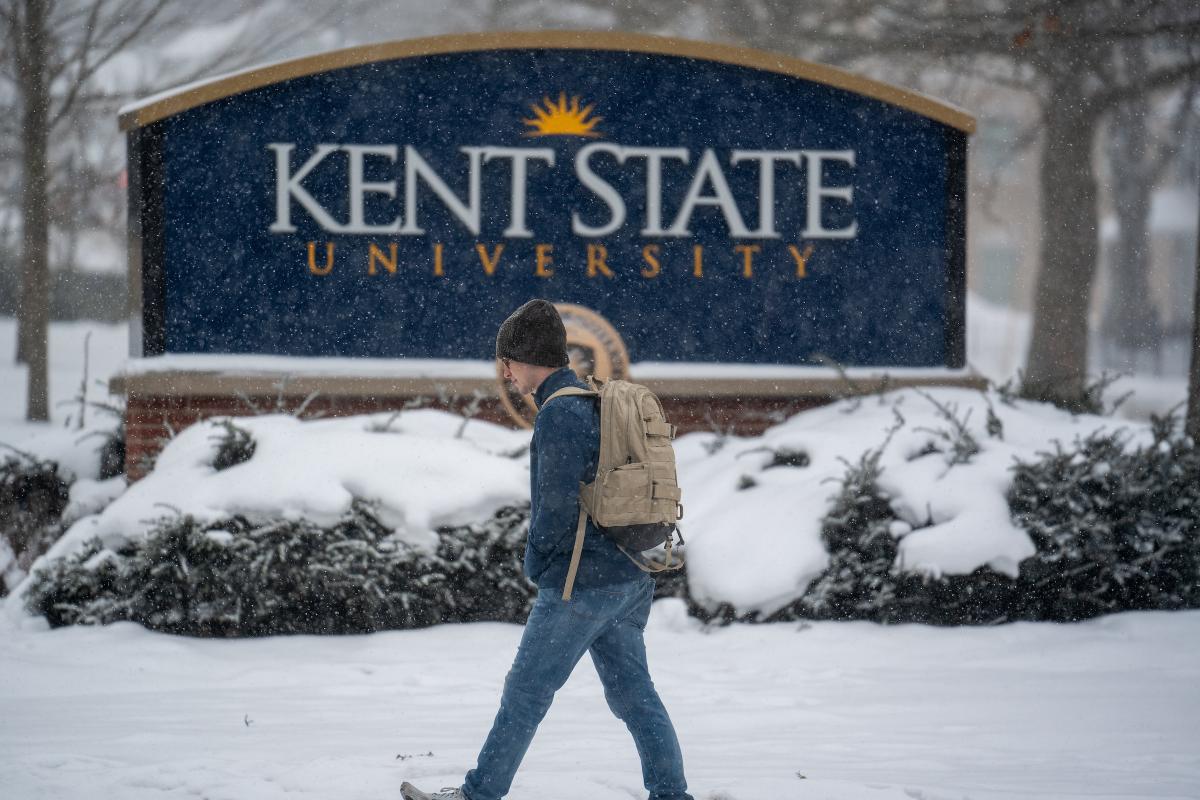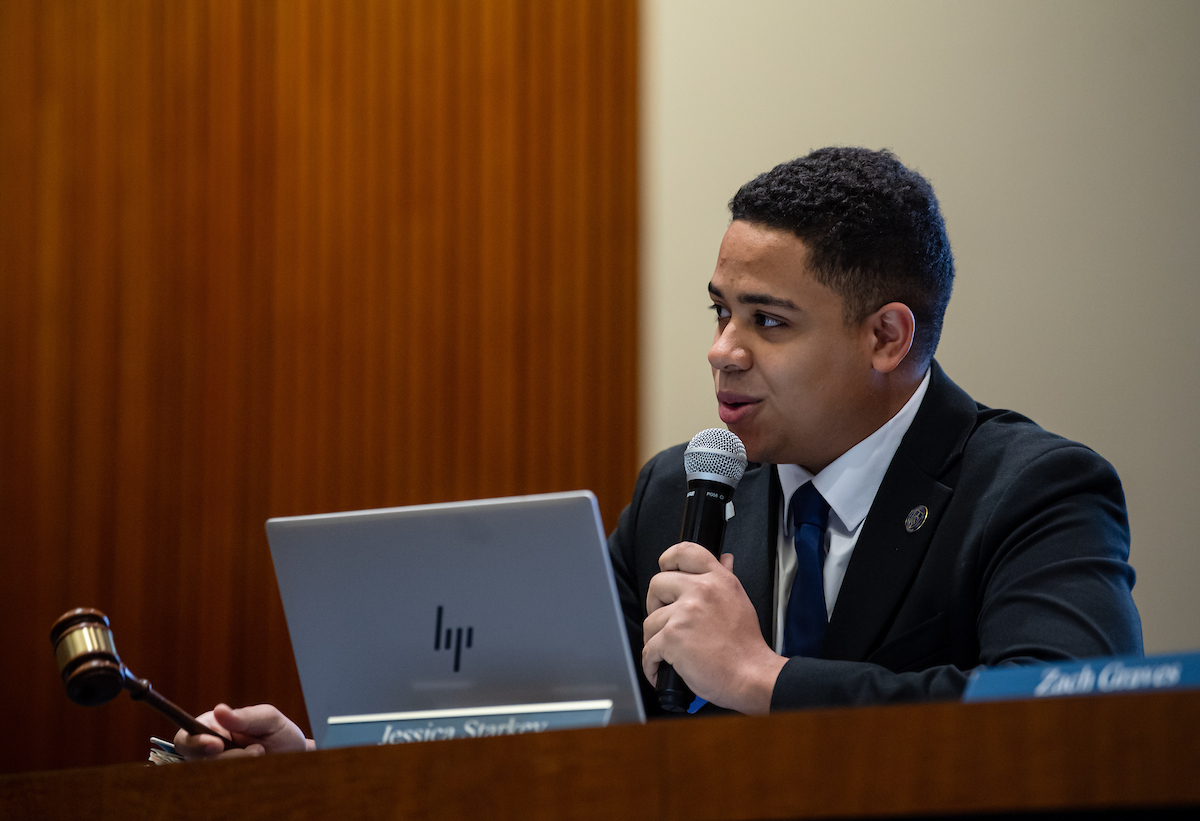On a quiet weekend last September, 5X���� Student Government President Ivory Kendrick decided it was time to tackle an issue that had frustrated students for years: the university's cold-weather policy.
What started as a personal project on a Friday afternoon would ultimately lead to a successful negotiation with Melody Tankersley, Ph.D., executive vice president and provost, and a permanent change in university policy – lowering the threshold for campus closures from -20 degrees wind chill to -15 degrees wind chill.
Tankersley and Jeannie Reifsnyder, interim senior vice president for finance and administration, sent the campus community winter weather advisory information this week with the following revision:
For extreme cold, we will delay or cancel when the wind chill reaches (or is predicted to reach) -15 degrees Fahrenheit for an extended period.
"There are many considerations in determining university or in-person class closures or delays, such as parking, road and walkway conditions on campus, but sustained and low wind chill prediction is especially important," Tankersley said. "As is the same at many universities in Northeast Ohio, our standard threshold of -20 for a sustained period of time was our practice until President Kendrick proposed changing to -15 wind chill for student safety. He presented a well-researched and rational proposal that was compelling and grounded in our Students First philosophy. It was easy to support President Kendrick’s request."

Proactive Approach
"You can't really wait until the weather gets bad. You have to be proactive about it," Kendrick explained, recalling how he spent that weekend drafting what would become an eight-page proposal.
The document was methodical and data-driven. Kendrick researched how frostbite affects the human body, compared Kent State's campus size to other universities' weather policies, and created concrete examples to illustrate the danger students faced.
One calculation proved particularly compelling: A student walking from Beall Hall on Eastway Drive to the School of Fashion on Hilltop Drive in -17-degree weather would likely risk frostbite simply from the time spent outdoors traversing the campus.
"I was really trying to make sure that it wasn't accusatory," Kendrick said of his approach. "It was more just like, hey, this is me just coming to you as the student body president. This is what needs to change."
Building Support
After completing his draft, Kendrick carefully built support for the proposal. He first sent it to his cabinet for feedback, then shared it with higher administration to gauge their response. The reactions were encouraging enough that he scheduled a meeting with the provost.
"I kind of thought this wasn't going to pass," Kendrick admitted. "You always have to kind of be prepared for the worst. But after talking to the provost and after talking to higher admin, a lot of them thought it was a good idea."
The meeting with the provost – Kendrick's first time meeting with her went better than expected. "She was super awesome, super sweet and kind. She kept it very real, and I appreciate that," he said.

The Compromise
Kendrick's original proposal included a provision for asynchronous courses when classes were canceled, but the provost raised concerns about equity for students without reliable internet access. Kendrick agreed to remove that component.
The wind chill threshold, however, was something both sides agreed needed to change. Kendrick had initially hoped for -10 degrees wind chill, but couldn't find sufficient data to support that number. His research consistently pointed to -15 degrees wind chill as the temperature at which frostbite risk becomes significant during extended exposure.
"The common number I kept getting was -15 (degrees wind chill) for a long period of time," Kendrick explained. "The wind chill was really a determining factor, and that's what I wanted to address."
The provost reviewed the revised proposal with her team and found no compelling reason to reject it. The new policy went into effect immediately.
A First Success
For Kendrick, the successful negotiation represented a milestone in his presidency and his first experience with policy change at this level.
"As long as I have my data points and I have my facts, I can make it work," he reflected on his strategy.
His advisor had offered perspective during the process: even if the proposal didn't pass, attempting to make actual change would still be a victory. But with backing from students, the Undergraduate Student Government, and university administration, the change did go through.
The provost sent a campus-wide update, and her team began updating university websites to reflect the new -15-degree wind chill threshold for campus closures.
For students who remembered last year's complaints about having to attend classes in dangerously cold conditions – including three or four days when the wind chill hit -17 or -18 degrees – the change arrived just in time for winter.

